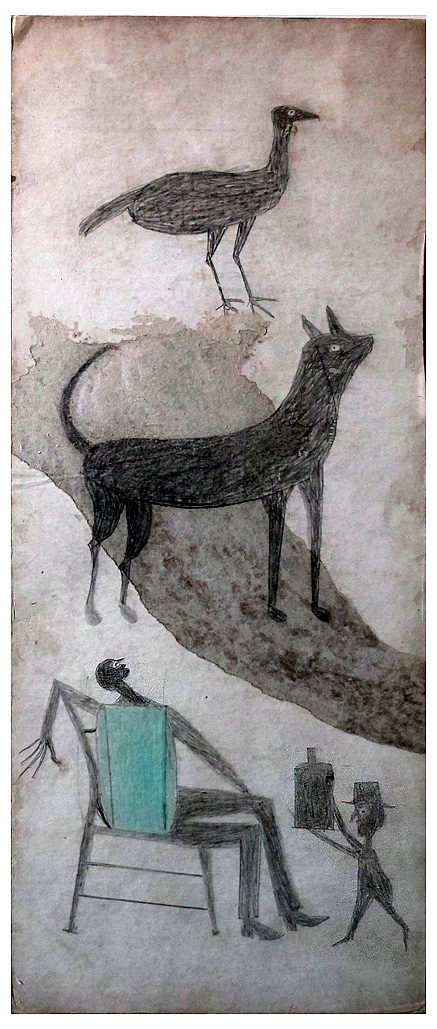William "Bill" Traylor (April 1, 1854 – October 23, 1949) was a self-taught artist born into slavery on a plantation belonging to George Hartwell Traylor near Benton,
in Lowndes County, Alabama.[1] After emancipation, his family continued to farm on the plantation until the 1930s.[1] In 1939, at age eighty-five, he moved to Montgomery,
where he slept in the back room of a funeral home and in a shoemaker's shop. During the day, he sat on the sidewalk and drew images of the people he saw on the street
and remembered scenes from life on the farm, hanging his works on the fence behind him. That year, he met Charles Shannon, a painter, who, with his friends from the
New South, brought Traylor art supplies and bought his drawings for nominal sums.
During the next four years, Traylor produced between 1200 and 1500 drawings.[2] In February, 1940, the New South hosted an exhibition of Traylor drawings, and in 1942,
the Fieldston School in Riverdale, New York, hosted an exhibition organized by Victor E. D'Amico. The shows produced no sales. During World War II, while Shannon served
in the South Pacific, Traylor moved north to live with relatives. Returning to Montgomery in 1945, he lived on the street again until relief workers insisted that he move
in with a daughter who lived in Montgomery. A requiem mass was held for Traylor at St. Jude Church after his death October 23, 1949.
In the late 1970s, Shannon, who had preserved Traylor's drawings for over thirty years, began to show them to art dealers and museum professionals. This time, the drawings
proved popular with critics and the public; two 1979 exhibitions at the R.H. Oosterom Gallery in New York launched a succession of almost forty solo shows and hundreds of
group shows in the years since. Traylor has become among the most highly regarded and sought-after of self-taught artists. His work is held in many public collections
including that of the Metropolitan Museum of Art and the Museum of Modern Art. The Montgomery Museum of Fine Arts, with thirty-one drawings, and the High Museum of Art,
with thirty-five, currently hold the largest public collections of Traylor drawings. The artist's work also forms a part of many fine private collections of self-taught,
contemporary, or Southern folk art.
Traylor is known for his intriguing use of pattern versus flat color, a sophisticated sense of space, and the simplified figures that give his work a startlingly modernist
look. Using a stick for a straightedge, he created geometric silhouettes of human and animal figures which he then filled in with pencil, colored pencil, or poster paints.
Much speculation surrounds the identification of mysteriously shaped objects, usually referred to as "constructions," and the complex scenes he called "Exciting Events,"
which depict groups of people energetically engaged in often puzzling activities.
.
main |
|

